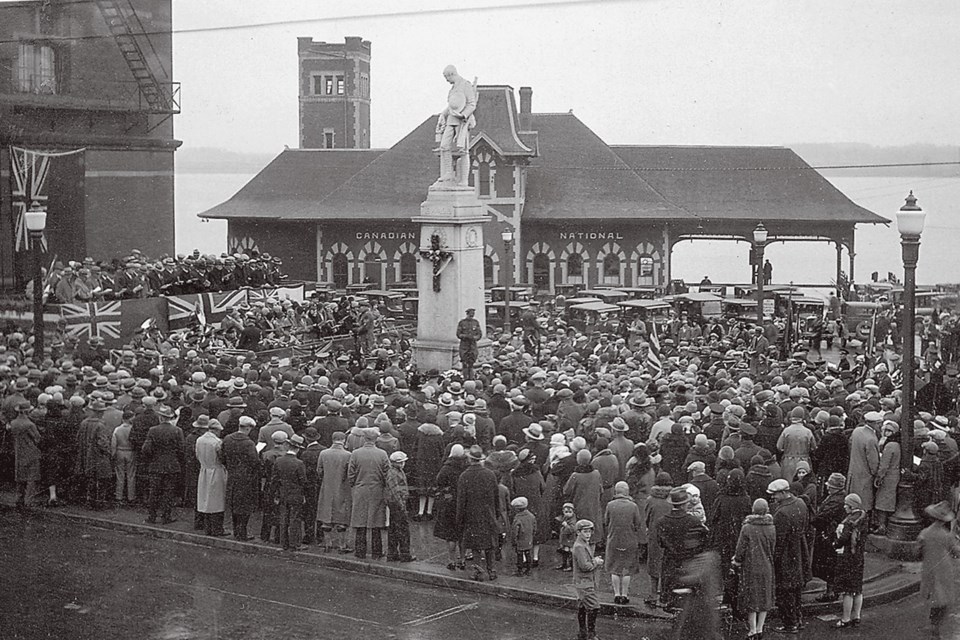A century-long gathering place in downtown Barrie is a bit quieter these days.
With concerns about the COVID-19 virus, there may be fewer residents strolling through Memorial Square and Meridian Place on Dunlop Street, but the striking Barrie cenotaph — acknowledging the sacrifices of Canada’s military — looms large, harkening back to other times of national strife and sacrifice.
“That whole space is very precious and it’s been very precious for a long time for a lot of different reasons,” says Brad Rudachyk, who, along with Su Murdoch and Kurt Schick, produced the book Beautiful Barrie.
“The original purpose of the cenotaph is about commemorating the ultimate sacrifice that was paid by our local boys so they should be forever brought to mind and not lost,” Rudachyk says. “When you look at something like the cenotaph, you are looking at people who put country above self: ‘we’ before ‘me’.
"Maybe that’s something we should be thinking about during these times.”
As early as February 1920, the County of Simcoe was looking at doing some kind of county memorial and residents understood that some sort of memorial should be erected. But just where?
“One county council member said the county as a whole should have a memorial and no better place could be chosen than the post office square in Barrie,” Rudachyk says. “The (First World) War was over and they really wanted to recognize — as soldiers were called — the glorious dead, fallen heroes. They wanted to recognize the sacrifices of their fellow Canadians, whether they were from Barrie or the local townships.”
There have been shafts or commemorations — soldiers’ memorials — for fallen or dead heroes going back for centuries, Rudachyk says.
“The owners of the Barrie Marble Works were talking in an advertisement in August of 1919 that the word cenotaph is derived from two Greek words signifying an empty tomb which has come into later usage to mean any form of a memorial erected in honour of one who’s mortal remains are elsewhere interred or lost,” he says. “There is no one buried at the post office square. That’s what it is: an empty tomb. That’s a particularly fitting tribute to the sailor lost at sea or the soldier who lies buried in a foreign land.
“The whole idea of the cenotaph is a memorial erected in honour of those who are interred elsewhere or lost.”
Memorial Square and Meridian Place also showcase the Vimy Ridge Monument, which houses an urn holding sacred soil, symbolic of the Canadian soldiers who lost their lives in the Battle of Vimy Ridge in 1917, as well as four red maple trees representing each of the four divisions of the Canadian Corps who fought in the that battle.
A bronze inlay commemorating the Huron and Ouendat peoples who lived around the Kempenfelt Bay area, and the trade route they used — the Nine Mile Portage — is also featured.
A special place continues to hold special memories for a grateful and remembering Barrie community.



